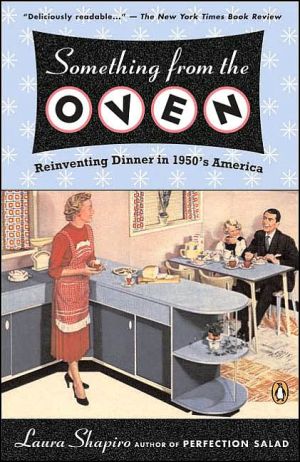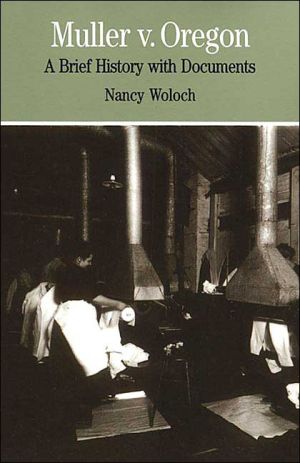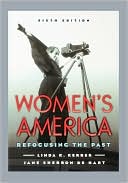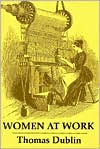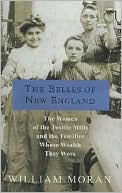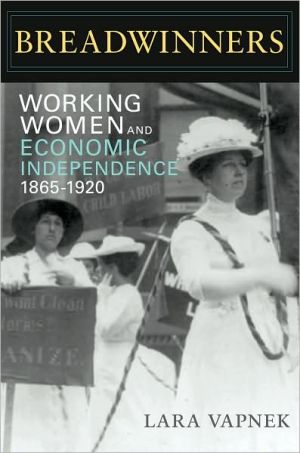Something from the Oven: Reinventing Dinner in 1950's America
In this captivating blend of culinary history and popular culture, the award-winning author of Perfection Salad shows us what happened when the food industry elbowed its way into the kitchen after World War II, brandishing canned hamburgers, frozen baked beans, and instant piecrusts. Big Business waged an all-out campaign to win the allegiance of American housewives, but most women were suspicious of the new foods—and the make-believe cooking they entailed. With sharp insight and good humor,...
Search in google:
In this captivating blend of culinary history and popular culture, the award-winning author ofPerfection Salad shows us what happened when the food industry elbowed its way into the kitchen after World War II, brandishing canned hamburgers, frozen baked beans, and instant piecrusts. Big Business waged an all-out campaign to win the allegiance of American housewives, but most women were suspicious of the new foods—and the make-believe cooking they entailed. With sharp insight and good humor, Laura Shapiro shows how the ensuing battle helped shape the way we eat today, and how the clash in the kitchen reverberated elsewhere in the house as women struggled with marriage, work, and domesticity. This unconventional history overturns our notions about the '50s and offers new thinking on some of its fascinating figures, including Poppy Cannon, Shirley Jackson, Julia Child, and Betty Friedan. Author Biography: Laura Shapiro was an award-winning writer at Newsweek for more than fifteen years, and has written for many publications, including The New York Times, Rolling Stone, Granta, and Gourmet. The New York Times Shapiro apologizes that her book ''focuses almost exclusively on middle-class women,'' but there's no need for guilt -- the hegemony of Nescafe, Bisquick and Jell-O extended almost immediately to the blue-collar kitchen, and the reaction against it has benefited all classes of society. Shapiro's tale of how America gradually turned from eating TV dinners to using the television to learn how to cook real food cheers up immensely when she leaves behind the Cheez Whiz and sherry (added to pep up broccoli) and, in a chapter called ''Don't Check Your Brains at the Kitchen Door,'' introduces Poppy Cannon, the first of the many engaging heroines of this deliciously readable book. — Paul Levy
Something from the Oven\ Reinventing Dinner in 1950's America \ \ By Laura Shapiro \ Penguin Books\ Copyright © 2005 Laura Shapiro\ All right reserved.\ ISBN: 014303491X \ \ \ \ Chapter One\ The Housewife's Dream \ Theadora Smafield clasps her hands with joy: She has just won the Grand Prize in the very first Grand National Recipe and Baking Contest, better known as the Pillsbury Bake-Off. The contest was staged in a ballroom at the Waldorf-Astoria Hotel in New York on December 13, 1949. Among the one hundred finalists were such attention-getting entries as Patio Picnic Casserole, Company's Coming Cashew Pie, and Ruth's Dotted Swiss Cake; but Mrs. Smafield's No-Knead Water-Rising Nut Twists triumphed over all. She took home $50,000 and later opened Life magazine to find a glossy picture of herself in glory. (Photo: Martha Holmes/Time Life Pictures/Getty Images.)\ Toward the end of February 1954, James Beard was at work in his Greenwich Village kitchen doing what he most loved to do: cooking delicious meals. One night he made lobster à l'américaine for a dinner party; a few days later he entertained guests with a quiche of sautéed bay scallops, then served them fillet of beef with a Marchand de Vin sauce. The next day he set about braising octopus in olive oil and garlic, and while it simmered slowly in red wine, basil, and parsley, he wrote a quick note about the recipe to his friend and gastronomic soul mate, the California cookbook author Helen Evans Brown. "Smells divine," he told her contentedly. With five cookbooks out, most recently Paris Cuisine, and several more being readied for publication in 1954, Beard was well settled at the forefront of his profession. Later that year The New York Times would bestow upon him the title that would accompany his name for decades to come: "Dean of American Cookery." And yet, as he often complained to Brown, American cookery seemed to be barreling off in quite a different direction from their own culinary styles. For every dinner like the one Cecily Brownstone, food editor at the Associated Press, offered him that summer-they dined in her garden on shrimp with dill and tarragon, steak in a garlic and ginger butter sauce, and baked pears with praline-time and again he encountered recipes for its evil twin, a cuisine he bemoaned as "the Home Ec side" of cookery. "I have been going over a brunch cookbook for House and Garden because someone forgot to put in the wines," Beard wrote to Brown in 1960. "Such a mess of stuff. There is actually a recipe for rolling white bread with butter and a sprinkling of Lawry's salt and toasting it in the oven. I nearly popped. What wine you might choose for that is problematic. I would say an old pre-phylloxera Mogen David Concord, with added sugar, myself."\ Beard, Brown, and their like-minded colleagues would spend years gloomily monitoring the disappearance of old-fashioned good cooking. Successful though they were in their own careers, they felt powerless as processed foods rolled across the nation like an invasion welcomed by the multitudes. "Where, oh where, do you find a real apple pie, oozing with juices and covered with a flaky brown crust?" he wondered. "Or a fine, well-grained chocolate cake? Or a buttery piece of genuine pound cake?" Not in Portland, Oregon, his hometown. When he arrived for a visit in 1953, the food page of the local paper was rejoicing over Pineapple Betty (marshmallows, pineapple, graham cracker crumbs, and nuts). The nation seemed to have lost its ability to cook with skill or to taste with pleasure. As far as Beard was concerned, what he and Brown undertook in the kitchen and at their typewriters was "missionary work"-bringing the gospel of fine homemade meals to Americans pathetically satisfied with shortcuts and fake pizzazz. Small wonder that when he heard about the daily cooking segments on NBC's lavish new Home show, he was aghast. "Try to get to a television set," he urged Brown. "Poppy Cannon is the food person, and she did a vichyssoise with frozen mashed potatoes, one leek sautéed in butter, and a cream of chicken soup from Campbell's."\ Beard himself had been making vichyssoise-real vichyssoise, with cream and a little nutmeg and a rich, homemade broth-at least since 1939 when he and his partners in a chic Manhattan catering company used to put up vats at a time and sell it for an impressive two dollars a pint. Now here was Poppy Cannon, author of the immensely popular Can-Opener Cookbook, blithely deranging a great soup on national television. Her creed-for she, too, was a missionary-was exactly the opposite of Beard's. "It's easy to cook like a gourmet, though you are a beginner," she announced in The Can-Opener Cookbook. "We want you to believe just as we do that in this miraculous age it is quite possible-and it's fun-to be a 'chef' even before you can really cook." Like Beard, she made lobster à l'américaine, but hers started with a can of tomato soup. Her "French" and "so romantic" variation on floating island called for lemon Jell-O in the shape of little hearts, dropped on a "small golden sea of soft Royal Custard sauce." The food industry was no enemy to her; it was Aladdin's lamp.\ To Beard, everything that was wrong with American cooking in the postwar era was symbolized by the remorseless Poppy Cannon. Yet the two of them had more in common than a look at (or a taste of) their respective vichyssoises might have indicated. Beard's antagonism to the food industry would relax considerably when he started working as a consultant to food companies. And while Cannon had deep and sometimes inexplicable loyalties to the industry, she was hardly its slave-as we shall see in another chapter. What really separated culinary purists like Beard from industry enthusiasts like Cannon wasn't their assessments of American cooking, it was their views of the American cook. Beard believed the housewife was losing her way, forfeiting her skills, mindlessly surrendering to packaged foods whenever they beckoned. Cannon saw that same housewife heading smartly into the future, reinventing great culinary traditions with the help of epicurean new products.\ Neither of them had it quite right. During that winter of 1954, just a few weeks before Cannon made her appearance on the Home show, the women's page editor of The Boston Globe was hit by an unexpected torrent of angry mail. The paper had published an enthusiastic story on New Year's Day about a speech by a food industry consultant trumpeting all the advances made possible by modern science: frozen food, milk in cartons, fresh vegetables available year-round, electric mixers and toasters. "How long is it since you spent a day without the benefit of science?" the industry expert demanded. "Our kitchen culture may be founded on tradition, but each year science has made its gifts to the homemaker." These sentiments inspired a rush of responses from readers who were not only ungrateful for the latest "gift" they encountered on supermarket shelves, they were downright suspicious. "We've had repercussions-but plenty!" the editor wrote in a follow-up story, and quoted from a few of the letters that had poured in. "Just how much more do packaged foods cost?" "How much time do we homemakers save when using packaged food?" "How does packaged food assure a healthier family? Both my Grandparents lived to be over 90 and they bought their flour in a barrel."\ Undoubtedly, these readers were glad to bring home their carrots washed and their flour free of bugs, but they weren't abandoning culinary tradition with the zeal the food industry had been counting on. By the time they sat down and wrote to the Globe, in fact, some of these women had been wooed by the food industry for nearly a decade, and they still weren't ready to make a commitment. There was a future for frozen spinach-nobody in the food industry doubted that, and most housewives knew it, too. But it wasn't going to be the future everyone expected, the future that Beard so dreaded and Cannon so joyfully anticipated. It wasn't going to be the glittering future that food companies had been charting since the end of World War II when they turned their attention from military to civilian appetites and began to glimpse the tantalizing profits that lay ahead. Winning the loyalty of American home cooks would turn out to be a lot more difficult than the inventors of instant mashed potatoes and frozen chopped liver ever imagined.\ It was a sweltering August day, the air-conditioning in his office was broken, and Joe Graham was worried sick about the price wars that posed an increasing threat to his frozen-food distribution business. Suddenly an old-fashioned electric fan, mounted overhead, fell off the wall and bonked him senseless. When he woke up, it was half a century later-August, 2000. Helicars flew back and forth overhead and parked on the roofs of buildings; and instead of unbearable heat the weather was lovely, for as his friend Marty told him, "Now the entire city is air-conditioned. Huge atomic blowers keep a mass of cooled air in circulation." Joe was so dazed by everything he saw that Marty invited him home for the evening, and that's where Joe encountered sights even more amazing, at least to a frozen-food devotee. Marty's wife, Janet, was delighted to see Joe, for this was one wife who had no problem entertaining unexpected guests for dinner. The meal would be ready in five minutes, she told the men, and strolled away into the next room. At her approach, a segment of one wall slid away to reveal shelves of frozen foods. She selected several packages, placed them in a small compartment in the sliding wall, pressed a button for a few seconds, and announced, "All defrosted and ready to cook." In another room, she inserted the food into a metal square and waited exactly one minute. Then she called the men to the table. "This is some kitchen," Joe remarked, and Janet laughed. "That's a word I haven't heard in a long time," she told him. "There's no such thing as a 'kitchen' nowadays.... Just freezer space, electronic cooking, automatic dishwashing. Life's really simple nowadays-science has emancipated women right out of the kitchen."\ "Frozen Foods 2000 a.d.: A Fantasy of the Future" was published in Quick Frozen Foods, the industry's leading trade journal. To cook by choosing food packages, to watch the home kitchen fade away into unsentimental memory-Joe's professional Utopia went straight to the heart of the food industry's grandest vision for postwar America. "My predictions are based on current trends and their possible final form," explained E. W. Williams, publisher of the journal and writer of the story. "May we dare to hope that some as yet unborn reader of Quick Frozen Foods on some long-distant day will take up this article from a dusty shelf and exclaim, 'Well, whatdyeknow, they had it figured out 50 years ago!'"\ They did have it figured out, or at least they devoutly hoped so. Back in the mid-'40s, as World War II was ending, the food industry found itself confronted with the most daunting challenge in its history: to create a peacetime market for wartime foods. Manufacturers and packagers had put considerable expertise into the war effort, not only keeping grocery stores adequately stocked but turning out an array of specially designed foods that could accompany the armed forces anywhere-from camp to jungle to high in the air. Now a great deal of new technology was in place or under development, and factories were ready to keep right on canning, freezing, and dehydrating food as if the nation's life still depended on it. But peacetime shoppers, unlike soldiers in foxholes, had a choice. If a product didn't seem appetizing, it was going to be wonderfully easy for people to ignore it. What the industry had to do was persuade millions of Americans to develop a lasting taste for meals that were a lot like field rations.\ Some of the new foods eagerly sent to market right after the war were, in fact, field rations. "Foods formerly manufactured solely for army use will now be put on the civilian market," announced American Cookery magazine in 1946, hailing a bonanza of canned meats. "Only 12 different varieties were available before the war, but postwar shelves will boast 40 varieties." Along with the indestructible luncheon meats known as Spam, Treat, Mor, Prem, and Snack, there were canned-ham-and-sweet-potato dinner, canned pork with applesauce, and canned bacon. Dehydrated potatoes and powdered orange juice were ready for market as well. The magazine also welcomed Tatonuts, "a new potato tidbit" notable for its "strong resistance to weather conditions." According to the manufacturer this product would remain "crisp and crunchy" for months. Other foods crossing over from military to civilian life included canned deep-fried hamburgers and canned fruit gelatin, although the latter had to be reformulated for consumers not likely to be serving it under battle conditions. The original version had been created to army specifications, resulting in a jellied dessert so stiff with pectin that it could be gripped by a soldier without losing its shape. For peacetime, the manufacturer was trying to work up a somewhat lighter consistency.\ It was a heady time for visionaries in the food business: If you could dehydrate orange juice, why not wine? An ingenious New York engineer set about drying sherry, port, muscatel, sauterne, and chianti, hoping sophisticated diners would come around to the idea of selecting an appropriate powder at dinnertime and adding water and alcohol. Another company spent the war years perfecting frozen coffee ("Froz-n Coff-e"), which came in a package of six paper cups, each holding an ounce of coffee extract.\ Housewives would simply squeeze the frozen extract out of its paper cup into a coffeepot and add boiling water. And just a year after the war was over, Maxson-a frozen-food company that had been supplying complete meals to wartime fliers, to be heated up on the plane-began offering similar dinners to be served aboard civilian airlines. Steak, meat loaf, beef stew, and corned beef hash patties were the first specialties, accompanied by vegetables, each item in the meal arranged in its own compartment on a plastic plate. "From its reception by travelers it seems a success," remarked Better Food magazine, adding that Maxson contemplated entering the retail market as well. Would families give up "the vital element of choice ... as to which vegetable goes with what?" Better Food thought they would, "in return for ease of preparation and excellence of product."\ Perhaps wisely, marketing efforts for some of the new foods skipped "excellence of product" and went straight to "ease of preparation." At General Mills the first shortcut product to be unveiled after the war was Pyequick, "an entire pie in a package." A box of Pyequick contained a bag of dehydrated apples and a bag of crust mix. "With a few simple movements, Mrs.\ \ Continues...\ \ Continues... \ \ \ \ Excerpted from Something from the Oven by Laura Shapiro Copyright © 2005 by Laura Shapiro. Excerpted by permission.\ All rights reserved. No part of this excerpt may be reproduced or reprinted without permission in writing from the publisher.\ Excerpts are provided by Dial-A-Book Inc. solely for the personal use of visitors to this web site. \ \
Introduction: Do Women Like to Cook?xvii1The Housewife's Dream12Something from the Oven413Don't Check Your Brains at the Kitchen Door854I Hate to Cook1295Is She Real?1696Now and Forever211Epilogue249Notes255Bibliography285Permissions and Credits295Index297
\ The New YorkerIn the fifties, we’re always told, the food industry barged into the American kitchen, waving TV dinners, and destroyed home cooking. Not so fast, Shapiro says. As she reveals, women refused many of the new convenience foods. Fish sticks they accepted, but not ham sticks. Canned peaches, yes; canned hamburgers, no. The industry people hired psychologists to help them combat such resistance; the women’s magazines, fond of their advertisers, told readers how, by splashing some sherry over the frozen peas, they could still make dinner look as though they had cooked it. The book is very funny, and also subtle. The most interesting character is Poppy Cannon, the foremost food columnist of the period, who, though she started her mint-jelly recipe with lime jello, was a serious feminist and had a long affair with—and eventually married—the head of the N.A.A.C.P. After American cooking passed her by, Cannon threw herself off the balcony of her apartment. This chapter reads like a Russian novel.\ \ \ \ \ The New York TimesShapiro apologizes that her book ''focuses almost exclusively on middle-class women,'' but there's no need for guilt -- the hegemony of Nescafe, Bisquick and Jell-O extended almost immediately to the blue-collar kitchen, and the reaction against it has benefited all classes of society. Shapiro's tale of how America gradually turned from eating TV dinners to using the television to learn how to cook real food cheers up immensely when she leaves behind the Cheez Whiz and sherry (added to pep up broccoli) and, in a chapter called ''Don't Check Your Brains at the Kitchen Door,'' introduces Poppy Cannon, the first of the many engaging heroines of this deliciously readable book. — Paul Levy\ \ \ Library JournalShapiro (Perfection Salad) offers a well-researched history of the relationship between the American woman's domestic role as family cook and the American food industry. The book documents the food industry's attempt to reinvent cooking during the 1950s. Its marketing strategy centered on convincing women that purchasing unappetizing packaged food products would free them from the unpleasant chore of cooking. However, to the chagrin of food manufacturers, most American women saw house cleaning as the dreaded chore but enjoyed providing food for their family. Simultaneously, another trend was vying for the attention of the sophisticated homemaker. Julia Child emerged and encouraged women to "take charge of their own world and to cook something very good from scratch." Shapiro argues that this second trend was indicative of women's search for greater independence not only from the food industry but from society's constrained gender roles. Even as someone who sides with the "cooking is a chore" camp, this reviewer found Shapiro's book highly readable. Recommended for public libraries.-Cathy Carpenter, Georgia Inst. of Technology, Atlanta Copyright 2004 Reed Business Information.\ \ \ \ \ Kirkus ReviewsFollowing Perfection Salad (2001), a report on how science, industry, and media changed the American kitchen and women's roles in the first part of the 20th century, Shapiro explores aspects of the same phenomenon in subsequent decades. In her wandering storyline, "1950s America" lasts from the end of WWII until the mid-'60s. The period began with the food industry trying to convince American housewives to embrace new products developed for troops fighting in Europe. Frozen orange juice and fish sticks worked; frozen whale steaks ("Papal approved" for Fridays) did not. Tapping the hope and frustration expressed in contemporary trade journals and letters to local newspapers, the first section serves up tangy social history, flavored by the quirky recipes promoted by industry PR: peanut butter in sweet potatoes, ketchup meringue, oatmeal with a candy bar in it. In later chapters, Shapiro takes a different tack, presenting mini-biographies of women involved in food media: Poppy Cannon, whose breezy food columns get less attention than her controversial marriage to an NAACP leader; Ernestine Gilbreth Carey, coauthor of Cheaper by the Dozen; Peg Bracken, whose I Hate to Cook Book anchored the humorous housewifery genre; M.F.K. Fisher, still our best food writer; and Julia Child, who brought French cooking into the mainstream. This portion of the text presents a deeply felt polemic, but conflicting dialectics make it hard to discern the precise nature of the author's argument. At first, she shows bland, sugary, and bizarre new products assailing the honest foods and integrity of the traditional housewife, but then she depicts that integrity as stolidity in the face of French cuisine.Throughout, Shapiro presents statistical and anecdotal evidence that the picture presented in The Feminine Mystique of housewives trapped and frustrated by their domestic fate was neither an original nor an accurate observation: women were in the workplace all along. Entertaining and well researched, but disjointed. Despite common themes, the parts don't cohere into a consistent whole. Agent: Amanda Urban/ICM\ \
